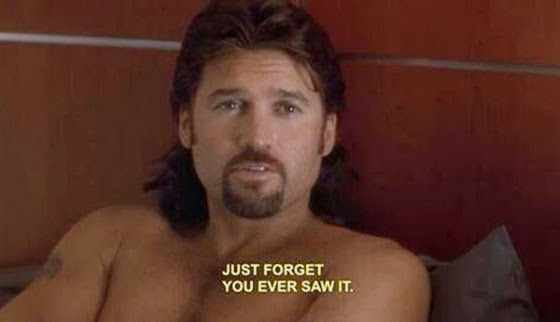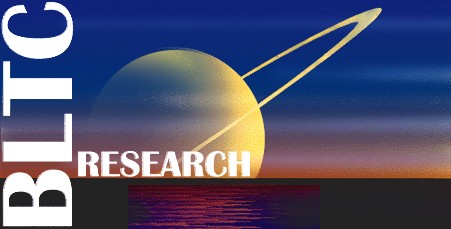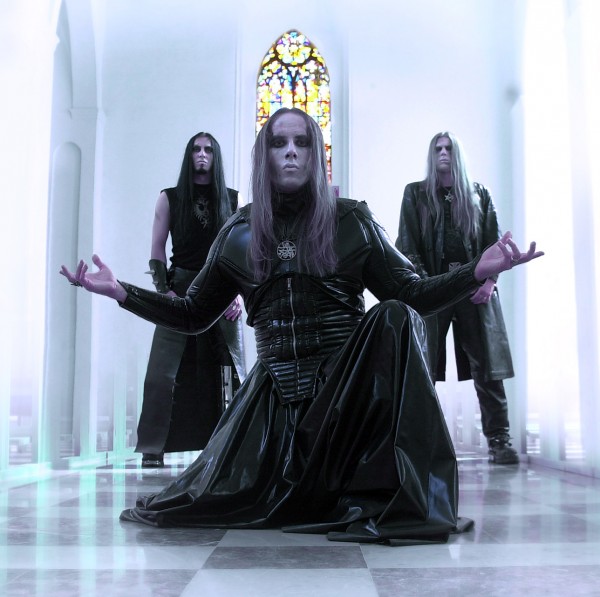Category Archives: Keep it Metal!
Fucked by major burns
[Reprised from beNZylpiperazine, April 2006.]
What do Niki Lauda, Hot Lips Houlihan and, now, a growing number of clandestine lab technicians have in common?
Drug cooks with acute burns from P lab explosions are bumping other patients off surgery waiting lists and costing taxpayers millions of dollars, says the Sunday Star Times.
“A 70 per cent burn takes five months of treatment and will cost $700,000 to treat,” says Waikato Hospital clinical director of plastic surgery and burns, Chris McEwan. “Its impact on our ability to manage the rest of our patient load is absolutely significant. It may delay the treatment of other patients by a considerable length of time.”
The public health system is in enough financial trouble already, without this. So what’s the government to do? We need go no further than the government’s National Drug Policy to find the obvious answer.
The National Drug Policy aims to improve the health and wellbeing of New Zealanders by encouraging the development of strategies and programmes which prevent and reduce drug-related harm.
Harm minimisation is where it’s at. How can we reduce the number of scorched P cooks presenting at A & E departments around the country? The approach that’s been tried, and has manifestly failed, is to criminalise the manufacture of methamphetamine and to provide harsh penalties for offenders. But does a threat of a long jail sentence really provide a deterrent to those who are otherwise prepared to risk lifelong disfigurement? Nope. The retail price of methamphetamine, massively inflated under prohibition, promises huge profits to the uncaught and unscathed. And does cramming our overcrowded prisons full of amateur chemists do anything to reduce the availability of P? Nope. The retail price of methamphetamine, massively inflated under prohibition, promises huge profits to the uncaught and unscathed, and the removal of one manufacturer from the market merely provides a business opportunity for another.
So what is the answer? I suggest something along the lines of needle exchanges for opiate users, like this one in Invercargill. Better still, we could follow the “shooting gallery” model adopted in New South Wales.
At a minimum, the government should provide free protective clothing and safety apparatus (and, of course, immunity from prosecution) to those who can prove their clandestine intent and P cooking credentials. This simple measure would, I’m sure, significantly reduce the burden on the public health system of victims of P lab explosions. Of course, to be effective, such safety gear must be used properly. I envisage that the government would also fund some training in proper laboratory procedure.
Although it would certainly cost a great deal more, ideally the government should set up centres in all P-ravaged communities where P cooks can take their dangerous chemicals and drug precursors and go about their business of manufacturing methamphetamine under the watchful supervision of qualified professionals.
A plea for BLTC
My speech to the Libertarianz Party Tenth Birthday Conference in July 2006.
arguably, the greatest harm caused by the War on Drugs has been to stifle research into new and better and safer recreational drugs.
Here‘s a summary as live blogged by Peter Cresswell.
Here are my speech notes. Neolithic Technology …
Fellow libertarians …
Let’s go back in time. Lindsay took us back 10 years. Let’s go back 10,000 years to the beginning of the Neolithic era, also known as the late Stone Age. The Neolithic is when humans quit the hunter-gatherer lifestyle and took up farming.
Technologically, we have come a long way since the start of the late Stone Age, 10,000 years ago.
In terms of materials and manufacturing technology, there was a good reason it was called the Stone Age, although some scholars have suggested renaming the era the Wood Age. Pretty much everything was made out of wood, or stone, or crude pottery. The potters wheel and kiln had yet to be invented. Today we have a huge choice of materials to work with from metals, thru plastics to carbon nanotubes. Technologically, we have come a long way since the Stone Age.
What about weapons technology? Stone Age fighters had maces and axes and other varieties of rocks for bashing people attached to wooden handles. They had the bow and arrow, and the sling. Today, we have handguns, tasers, cruise missiles and anthrax. Technologically, we have come a long way since the Stone Age.
Transport technology. In the Stone Age, it was Shank’s pony all the way. There were no roads in the Stone Age. The oldest so-called road dates from 3806 or 3807 BC. It was in fact a walkway over a peat bog in Somerset, England. Although Neolithic people had domesticated the horse, they hadn’t learn to ride it. They hadn’t invented the wheel. (But they had rollers.) Today we have motor cars, mag-lev trains, space rockets and the Segway. Technologically, we have come a long way since the Stone Age.
Communication technology. Strictly word of mouth. No alphabet, no writing, no printing presses, no telecommunications. No smoke signals, no carrier pigeons. Today we have the World Wide Web.
We have, indeed, come a long way since the dawn of the Neolithic. But there’s one area in which we hardly seem to have progressed at all. That’s in the technology of recreational mood alteration.
At the start of the late Stone Age, a newly discovered drug was rapidly gaining popularity, viz. alcohol. We know this because archeologists have unearthed late Stone Age beer jugs.
Alcohol, like all Stone Age technology, is most charitably characterised as “crude but effective”.
But, I put it to you that alcohol is more crude than effective.
Alcohol produces disinhibition and facilitates social interactions. It eases pain and anxiety and aids relaxation. It is indispensible for the Libertarianz leadership selection process. Best of all, it causes euphoria.
But it has a huge range of unwanted side effects.
A blood alcohol concentration of 0.1 grams of alcohol per deciliter causes slurred speech, and impaired ability to perform complex tasks, such as driving.
Higher doses, such as 0.3 BAC (blood alcohol concentration) cause confusion and impaired ability to perform simple tasks such as walking.
0.4 BAC causes stupor, 0.5 BAC causes coma, and 0.6 BAC causes respiratory failure and death.
Ever wondered why you feel so shitty the day after a good night of hard drinking? Why you feel like you’ve been poisoned? It’s because you have been poisoned. Not by alcohol, but by acetaldehyde which is what alcohol dehydrogenase converts alcohol to in the liver. The dangerous acetaldehyde is quickly converted to harmless acetate by another enzyme aldehyde dehydrogenase.
Unfortunately, if we overdose on alcohol, we can overload the body’s enzyme systems, flooding the bloodstream with toxic acetaldehyde and highly dangerous oxidative breakdown products called free radicals… resulting in an increased risk of cancer or cardiovascular disease, premature skin wrinkling, cataracts, liver damage, brain damage…
20 years ago, I read this book, Life Extension, by Durk Pearson and Sandy Shaw, in which they describe how to minimise the harmful effects of using alcohol by taking various nutrients and antioxidants.
A passage which jumped out of the page and stuck in my mind ever since is this one,
“An ideal solution to the alcohol problem would be to develop new recreational drugs which provide the desired alcohol high without the damaging side effects. There is, in fact, such a drug. It was invented by Alexander Shulgin, synthesized, and tested in humans (test subjects couldn’t distinguish between the drug and a few martinis).”
Shulgin is famous for having synthesised, and tested (on himself) literally hundreds of novel psychoactive drugs, principally drugs in the tryptamine and phenethylamine families of chemicals. His most famous work is called PIHKAL or Phenethylamines I Have Known And Loved.
Shulgin, of course, self-tested his proposed alcohol substitute.
he described a “mild, pleasant intoxication.” It produced “free-flowing feelings” that he likened to “the second martini.” Believing he had indeed found a synthetic alternative to alcohol, Shulgin brought it to parties, holding up a little baggie of white powder he called “a low-calorie martini.” Testing among his research group, however, revealed the full range of warmth and euphoria of the [new] high… it evoked in most people feelings of empathy and self-acceptance …
[Shulgin’s test subjects] lovingly nicknamed the new compound “empathy” and thought of it as “penicillin for the soul.”
What is this drug, and what happened to it? I’m sure you can guess what happened to it. In New Zealand, it was made Class B in 1986.
My speech notes were a bit sketchy in places … that was methylenedioxymethamphetamine.
In the last few years it has been gaining popularity as a “recreational” drug offering a pleasant, alcohol-like, hangover-free “high” with potent prosexual effects (5). Most users find that GHB induces a pleasant state of relaxation and tranquility. GHB induces “remarkable hypotonia” (muscle relaxation) (1). Frequent effects are placidity, sensuality, mild euphoria, and a tendency to verbalize. Anxieties and inhibitions tend to dissolve into a feeling of emotional warmth, well-being, and pleasant drowsiness. The “morning after” effects of GHB lack the unpleasant or debilitating characteristics associated with alcohol and other relaxation-oriented drugs (3).
Over the years, numerous researchers have extensively studied GHB’s effects. It is has come to be used in Europe as a general anesthetic, a treatment for insomnia and narcolepsy (a daytime sleeping disorder), an aid to childbirth (increasing strength of contractions, decreasing pain, and increasing dilation of the cervix), and a treatment for alcoholism and alcohol withdrawal syndrome (5).
GHB has been called “almost an ideal sleep inducing substance” (3). Small doses produce relaxation, tranquility and drowsiness, which make it extremely easy to fall asleep naturally. Higher doses increase the drowsiness effect and decrease the time it takes to fall asleep. A sufficiently large dose of GHB will induce sudden sleep within five to ten minutes (3). The most remarkable facet of GHB-induced sleep is its physiological resemblance to normal sleep…
That was gamma-hydroxybutyrate. I talked it up. Some people like it. I don’t and I don’t recommend it. A somewhat larger than sufficiently large dose of GHB will induce coma within five to ten minutes …
New Zealand has had a National Drug Policy since 1998. The policy sets out the government’s policy and legislative intentions for tobacco, alcohol, illicit and other drugs.
Recently I attended a consultation meeting organised by the MOH, where I put forward a libertarian viewpoint, and put in a written submission for the second National Drug Policy, which is the Government’s 5-year-plan for 2006 to 2011.
New Zealand’s National Drug Policy has an overarching goal:
To prevent and reduce the health, social and economic harms that are linked to tobacco, alcohol, illicit and other drug use.
My view is that, if we want to influence drug policies, we must engage with this fundamental goal, and we can do so in a limited way.
The overarching goal of the Policy, to prevent and reduce the harms that are linked to drug use, is a noble one. However, we must distinguish between three main kinds of drug-related harms
- Harms which individuals inflict upon themselves, or inflict upon others with their consent
- Harms which individuals inflict upon others without their consent
- Harms which governments inflict upon their citizens
Libertarianz says that the government should not seek to save people from themselves, and most certainly should not harm its own citizens. The government should seek to bring to justice those who commit thefts, assaults, rapes and murders, whether such criminal acts are drug-fuelled or not.
It’s by focussing on this third category that I believe we can, as libertarians, make a contribution to National Drug Policy while maintaining our philosophical integrity.
Moreover, the harms inflicted upon citizens by their own governments, in the name of the War on Drugs™, are widespread and severe. These harms are of the same order of magnitude as the drug-related harms which individuals inflict on themselves, and, unlike the harms which individuals inflict on themselves, they are preventable.
You are all probably familiar with the other main harms that the government inflicts on us, in the name of the War on Drugs™.
For example, a criminal conviction is an indisputable harm in itself. Thousands of these are handed down each year merely for smoking a psychoactive herb. Far worse is a sentence of life imprisonment, routinely handed down to some of our most daring entrepreneurs, for nothing more than supplying consumer demand for psychoactive chemicals.
This document identifies “four broad strategy areas for action” as means to achieve “harm minimisation”.
The government’s attempts at supply control and demand reduction do not decrease demand, and do not control supply, but they do alter the availability of specific drugs. With the result that relatively safe drugs are difficult to come by, and relatively harmful drugs (alcohol, tobacco, methamphetamine) are easy to come by.
One of the greatest harms of the War on Drugs™ is the way it’s stopped research into Better Living Through Chemistry. All of Alexander Shulgin’s new psychoactive drugs are illegal in New Zealand and most other countries, proscribed by the Analogues Amendment to the Misuse of Drugs Act.
Why would you spend your research dollars developing designer drugs which will be criminalised as soon as they go to market?
This stymieing and stifling and stultification of research into new and better recreational drugs, research which would bring us forward from the Stone Age to the 21st century, is one of the greatest but most overlooked harms of the War on Drugs™.
Fast forward to today and we have the Psychoactive Substances Act.
Do we have new and better recreational drugs?
Or is the government inflicting new harms on its citizens?
I am Jesus
Phew! It’s hard work trying to be *like* Jesus. Even harder work trying to actually *be* Jesus.
But at last! I’ve joined the exclusive Messiah Complex Club. My Christ delusion is complete.
I’m the latest in a long list of poor deluded fools to join the ranks.
But this time is different.
I’m the first person who thinks he’s Jesus who has logical proof to back the claim!
Here’s my argument.
(P1) I am the light of the world. – John 8:12
(P2) You are the light of the world. – Matthew 5:14
Therefore, (C) I am you and you are me.
So there you have it. Deductive proof that I am Jesus and Jesus is me. It’s a valid argument, which is to say, the conclusion follows from the premises. The premises cannot both be true and the conclusion false. And it’s sound. The premises are true. Take my Word for it.
It’s a Rock solid argument against which even the gates of Hell shall not prevail.
as ever: what is to be done?
I can do nothing without myself. I don’t know what you think you can do. (Just kidding. I read your mind. And your email.) But here are some ideas.
(1) Humour me. (Please don’t point out that I don’t have enough hair to be Jesus. That’s just cruel.)
(2) Medicate me. (Just send me the drugs. Contact me privately and I’ll give you the address.)
(3) Appeal to the last vestiges of reason in my poor deluded fool mind. (I’m probably still more rational than you’ve ever been.)
The last one’s your best shot IMOO.
Happy Birthday David Coverdale….

Putin is cool
Putin is cool.
Putin is cool like whitewashed tombs, which outwardly appear beautiful, but within are full of dead people’s bones and all uncleanness. But far be it from me to judge. That’s just the opinion of the deathly cold shiver running down my spine.
Those shades. Look at those shades.
Does Putin wear them to be cool? Or does he wear them to keep out the light of the world so he can continue his uninterrupted walk in darkness? (False dilemma or true? Putin is effortlessly cool, either way.)
How did Putin get to be so cool?
There could be a simple explanation. Russia’s a cold place. Only hell is colder (when it freezes over). Perhaps Putin’s still thawing out after the Cold War. But here’s how I think Putin got to be so cool. The chilling effect of censorship in Russia.
In 2013 Russia ranked 148th out of 179 countries in the Press Freedom Index from Reporters Without Borders.
Putin is cool. The camera doesn’t lie. But the photographic evidence is redundant. For the Lord sees not as man sees: man looks on the outward appearance, but the Lord looks on the heart.
Put on your God-goggles. Now what do you see? You see the hidden person of the heart. Do you see the imperishable beauty of a gentle and quiet spirit, which in God’s sight is very precious, or do you see a crooked heart, a heart that devises wicked plans, which is an abomination to God?
Still got the God-goggles on? Good. It’s mirror time.
Four ways to escape Behemoth
There hath no temptation taken you but such as is common to man: but God is faithful, who will not suffer you to be tempted above that ye are able; but will with the temptation also make a way to escape, that ye may be able to bear it. (KJV)
Behemoth ranks first among the works of God
“Look at Behemoth,
which I made along with you
and which feeds on grass like an ox.
What strength it has in its loins,
what power in the muscles of its belly!
Its tail sways like a cedar;
the sinews of its thighs are close-knit.
Its bones are tubes of bronze,
its limbs like rods of iron.
It ranks first among the works of God,
yet its Maker can approach it with his sword.
The hills bring it their produce,
and all the wild animals play nearby.
Under the lotus plants it lies,
hidden among the reeds in the marsh.
The lotuses conceal it in their shadow;
the poplars by the stream surround it.
A raging river does not alarm it;
it is secure, though the Jordan should surge against its mouth.
Can anyone capture it by the eyes,
or trap it and pierce its nose?” (NIV)
Behemoth is coming.
It’s time to drive a stake through the heart of Objectivism
I’m not sure how I ended up here. But I did.
The desire for the unearned has two aspects: the unearned in matter and the unearned in spirit. (By “spirit” I mean: man’s consciousness.) These two aspects are necessarily interrelated, but a man’s desire may be focused predominantly on one or the other. The desire for the unearned in spirit is the more destructive of the two and the more corrupt. It is a desire for unearned greatness; it is expressed (but not defined) by the foggy murk of the term “prestige.” . . .
Unearned greatness is so unreal, so neurotic a concept that the wretch who seeks it cannot identify it even to himself: to identify it, is to make it impossible. He needs the irrational, undefinable slogans of altruism and collectivism to give a semiplausible form to his nameless urge and anchor it to reality—to support his own self-deception more than to deceive his victims.
– Ayn Rand in “The Monument Builders,” The Virtue of Selfishness
And I was mortified. Just a few days ago I accused Rand of this.
The conventions that govern our use of stipulative definitions demand that any use of a word stipulatively defined is preceded with the appropriate disclaimer, i.e., “In what follows, I use ‘X’ to mean ‘Y’. Rand rode roughshod over this convention with cavalier contempt.
But in these two paragraphs (the Ayn Rand Lexicon entry on Prestige) not only does Rand adhere to the rules meticulously, – (By “spirit” I mean: man’s consciousness.) – she levels the very same charge at those who desire unearned greatness that I’d leveled at her.
I hastily posted an embarrassed retraction to atone for my rush to judgement. 🙁
But then I realised. I’d thought I was wrong but actually I was right. The two paragraphs do not exonerate Rand. They seal her doom.
Rand knew the rules. She knew the danger of ambiguity. She acknowledged the need of one who seeks unearned greatness for “irrational, undefinable slogans … to give a semiplausible form to his nameless urge and anchor it to reality—to support his own self-deception more than to deceive his victims.”
And she went and broke the rules. She capitalised on the foggy murk of the very ambiguities she introduced to underwrite her egoistic creed. She satiated her need for prestige with the irrational, undefinable slogans of Objectivism – not to support her own self-deception but to deceive her wretched victims – her own followers.
Rand knew exactly what she was doing.
If I’m not wrong, I’ve resolved something that has long puzzled me. You see, I’ve spent considerable time in the virtual company of Rand’s deluded disciples. And over the course of that time I’ve developed a grudging respect for Objectivism’s founder. The lady was smart, super-smart. But her philosophy simply doesn’t stack up.
It was never meant to stack up. It’s a philosophy for life on earth. Rand’s life on Earth, surrounded by an inner-circle of adoring sycophants. And her philosophy served its purpose. It created an army of hapless dupes in thrall to their evil dominatrix.
Rand earned her greatness. But what shall she give in return for her soul?
What is rationality? (Part 1)
It’s been a while, but tomorrow night The New Inklings meet again! The time is 7 pm. The place is the Downtown House Bar and Cafe at the Downtown Backpackers, corner of Bunny Street and Waterloo Quay, Wellington.
We discuss philosophy (mainly) and theology. You’re welcome to join us, provided that you are (1) irenic, and (2) rational. If you don’t know what it means to be irenic, Google is your friend. If you don’t know what it means to be rational, well … tomorrow night’s discussion topic is for you!
the nature of rationality and what a commitment to Reason entails
So I thought I’d jot down a few recent thoughts … and start a series of posts … on this fundamentally important to everything topic.
Here’s my all-time favourite Ayn Rand quote.
To arrive at a contradiction is to confess an error in one’s thinking; to maintain a contradiction is to abdicate one’s mind and to evict oneself from the realm of reality.
I used to love to brandish this one at Ayn Rand’s hypocritical followers. I say ‘used to’ because it’s just dawned on me that Rand got it completely wrong! (Yet again! Wotta surprise!)
To arrive at a contradiction is NOT to confess an error in one’s thinking. To arrive at a contradiction is the strongest confirmation possible that there is NO error in one’s thinking!
And to maintain a contradiction is NOT to abdicate one’s mind nor to evict oneself from the realm of reality. At least, not in the short-term, probably not in the medium-term and possibly not even in the long-term! NOT to maintain a contradiction, in the short-term at least, would be irrational in the utmost extreme!
I really don’t know why I didn’t see this sooner … perhaps you don’t see it yet, so I’ll explain.
The simplest example of a contradiction is a proposition and its negation. P and not-P. Two propositions are contradictory, or inconsistent, if they cannot both be true. Three propositions are mutually contradictory, or form an inconsistent triad, if they cannot all be true. Four propositions that cannot all be true form an inconsistent tetrad. And so on and so forth.
None but the completely insane ever believes P and not-P. But believing A, B and C, where A, B and C cannot all be true? This is a commonplace. But most people who believe A, B and C don’t notice the inconsistency. A and B don’t contradict. B and C don’t contradict. C and A don’t contradict. It’s the mutual inconsistency that gives rise to the contradiction. To arrive at the contradiction you actually have to have some logical nous. You have to be able to recognise that
(P1) A
(P2) B
Therefore, (C) not-C
is a deductively valid argument. So to arrive at a contradiction is actually to confirm that you have at least a basic grasp of logic! Which most people don’t.
So you’ve arrived at a contradiction. You believe A, B and C and you are cognizant of the contradiction. You know your beliefs can’t all be true. You know that (at least) one of them has to go. But which one? You’d better sit down and try to figure that one out. But you don’t want to reject the wrong belief. So, in the meanwhile, you’ll maintain the contradiction. Take your time. It’s the rational thing to do.










